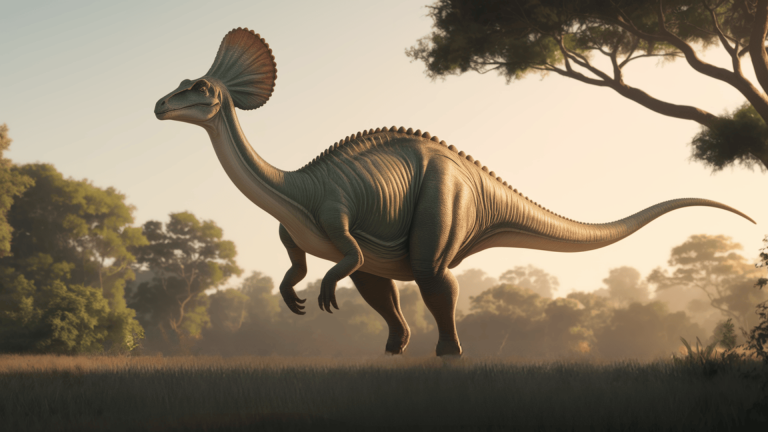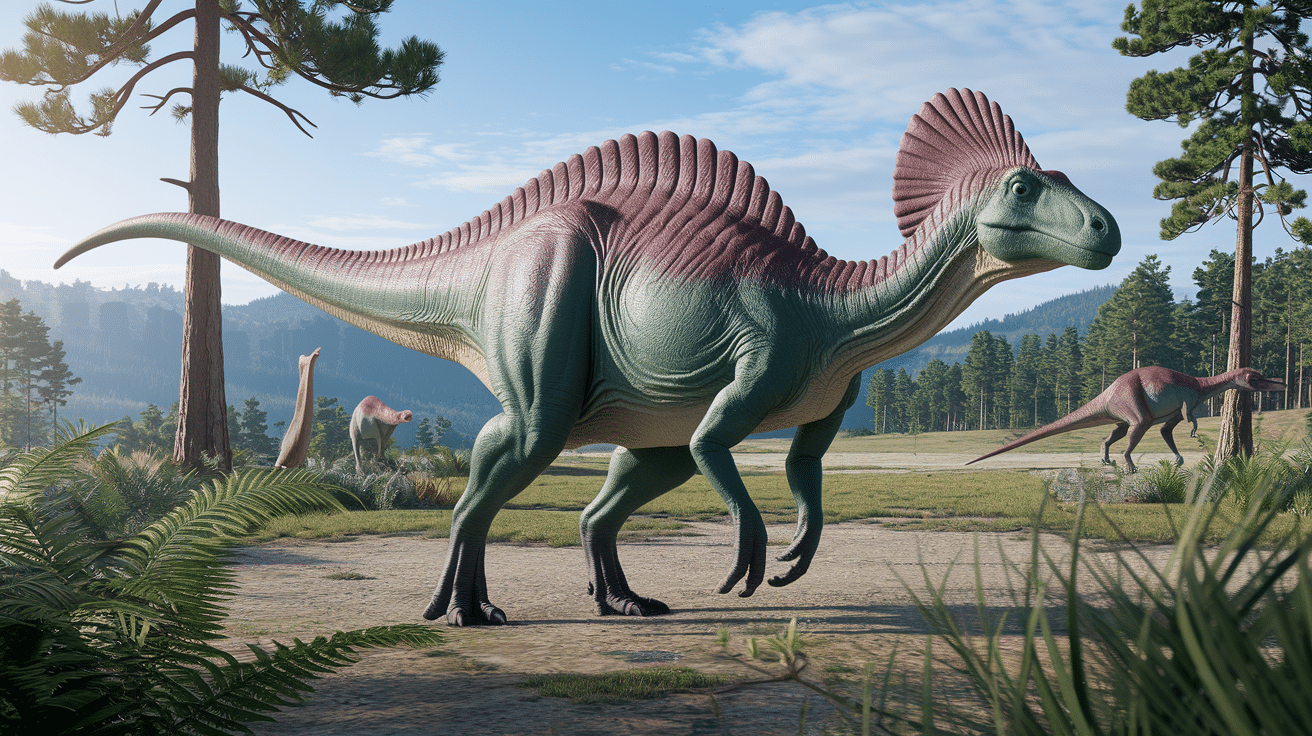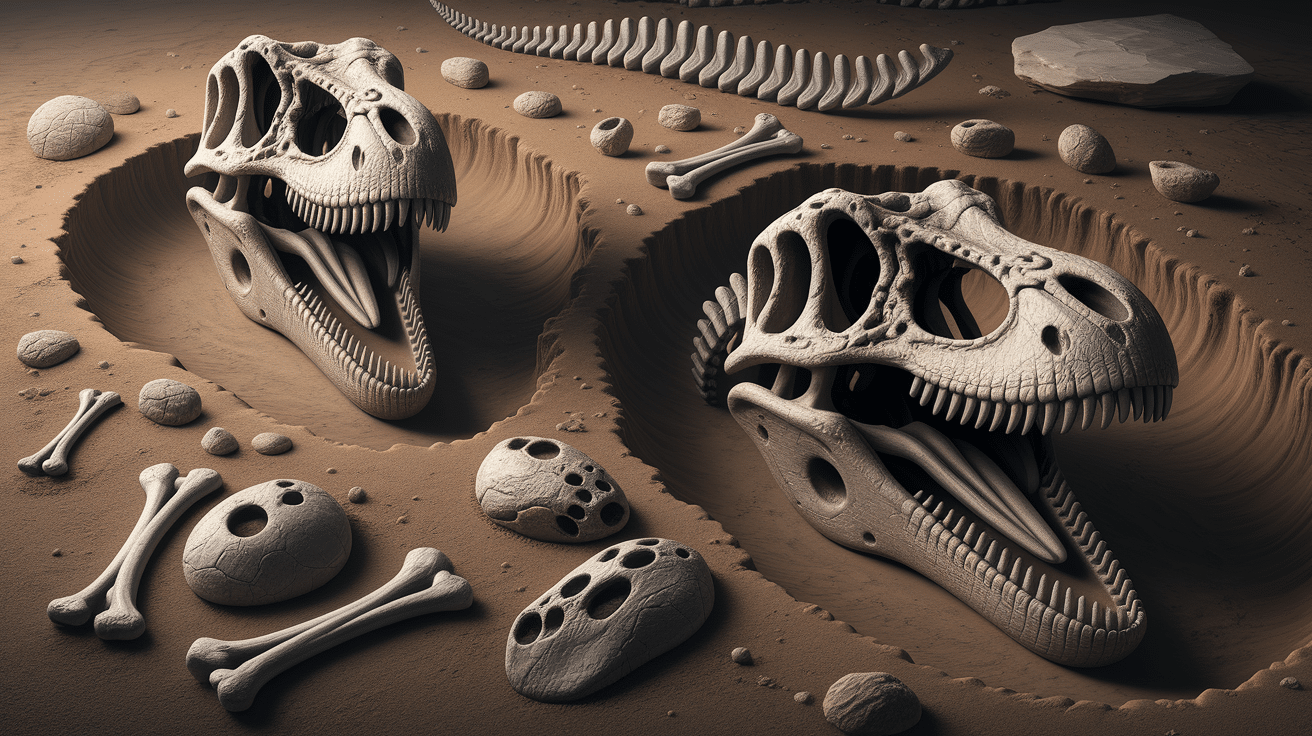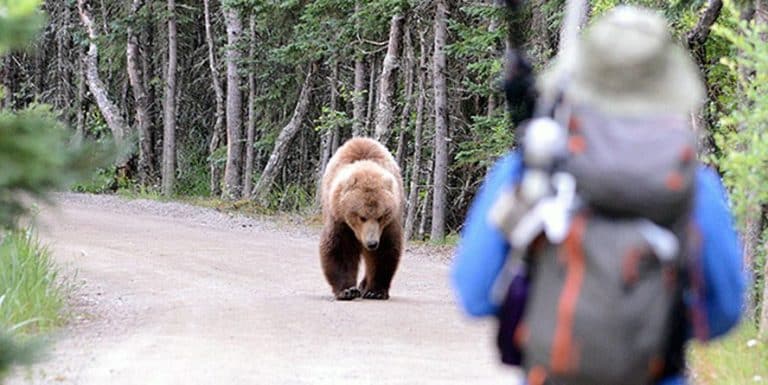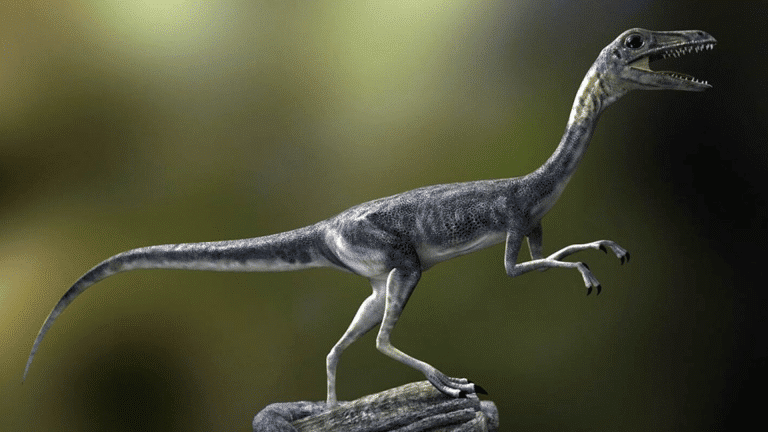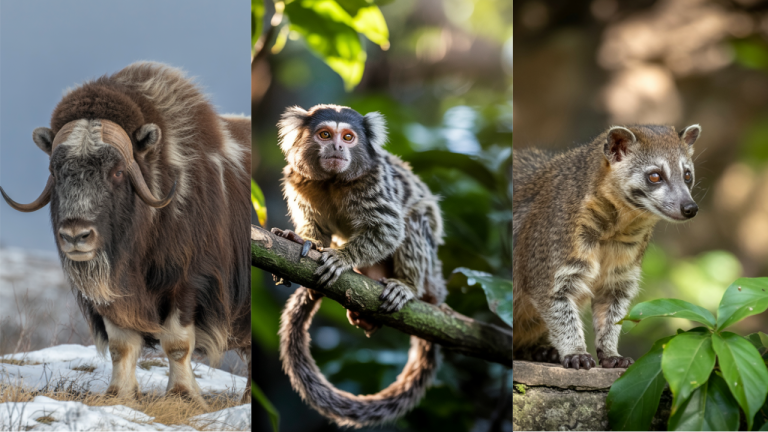The Parasaurolophus, with its iconic backward-curving crest, is one of the most notable dinosaurs from the Late Cretaceous period.
This herbivorous giant has captured the attention of paleontologists and dinosaur enthusiasts for years, providing key insights into prehistoric life and ancient ecosystems.
Learning about Parasaurolophus highlights its unique physical features and possible behaviors, such as the use of its hollow crest for communication or sound production.
Its existence has expanded our knowledge of dinosaur diversity and how these creatures lived in social groups millions of years ago.
For anyone interested in paleontology or natural history, Parasaurolophus offers a closer look at one of the most distinctive dinosaurs ever found.
Anatomy of the Parasaurolophus
The Parasaurolophus was a remarkable dinosaur with unique anatomical features. Its most striking trait was its long, curved head crest, a hollow tube up to 6 feet long, possibly used for communication, sound-making, or temperature regulation.
Its strong, bulky body featured sturdy legs, allowing it to walk on two or four limbs, while its flat beak was ideal for stripping leaves as a herbivore.
The dinosaur’s long, muscular tail provided balance, helped fend off predators, and supported it when standing tall to reach vegetation.
These adaptations made the Parasaurolophus a truly distinctive and well-suited creature of its time!
Parasaurolophus Facts
-
Unique Crest – The Parasaurolophus is famous for its long, backwards-curving crest on its head. Scientists think this crest might have been used for communication or to show off to other dinosaurs.
-
Size and Weight – This dinosaur was huge! It could grow up to 33 feet long and weigh around 2.5 tons, making it one of the bigger duck-billed dinosaurs.
-
Habitat – Parasaurolophus lived in North America about 75 million years ago, during the late Cretaceous period. It roamed forests and plains near rivers and lakes.
-
Diet – As a herbivore, the Parasaurolophus ate plants like cycads, conifers, and ferns. It used its beak and rows of teeth to chew tough plant material.
-
Crest Function – The crest wasn’t just for looks—it was hollow inside! Scientists believe it helped the dinosaur make sounds, almost like a musical instrument.
-
Social Behavior – Parasaurolophus probably lived in large herds. Being in a group helped them stay safe from predators and communicate with each other.
-
Defensive Mechanisms – This dinosaur wasn’t very fast, so it relied on its herd for protection. If a predator like a theropod came close, the herd would likely run away together.
-
Close Relatives – Parasaurolophus belongs to the Hadrosauridae family, which includes other duck-billed dinosaurs like Edmontosaurus and Lambeosaurus.
-
First Findings – The first Parasaurolophus fossils were found in the 1920s in New Mexico, USA. Since then, more fossils have been found, helping scientists learn about this dinosaur.
-
Coloration – No one knows exactly what colors Parasaurolophus had, but scientists think its body was probably dull to blend in with its surroundings. Its crest, however, might have been brighter for display.
-
Hollow Crest Theory – The crest had air passages inside, which could have amplified sounds. This made it work like a trumpet, helping the dinosaur communicate over long distances.
-
Sound Production – The hollow crest acted like a resonating chamber, allowing Parasaurolophus to make low, rumbling sounds. These sounds could travel far, helping herds stay connected.
-
Movement Patterns – Fossils show that Parasaurolophus could walk on two legs or four legs. This made it a versatile dinosaur, able to move easily through different types of terrain.
-
Extinction – Like most dinosaurs, Parasaurolophus went extinct around 66 million years ago during the mass extinction event caused by an asteroid impact.
-
Fossilized Tracks – Scientists have found fossilized footprints of Parasaurolophus. These tracks give clues about how it moved and behaved in its environment.
-
Crest Variations – There were different species of Parasaurolophus, and each had slightly different crest shapes. The crest of Parasaurolophus cyrtocristatus was more curved, while Parasaurolophus tubicen had a longer and more trumpet-like shape.
-
Migration Patterns – Based on fossil evidence, Parasaurolophus likely migrated seasonally to find food. Fossilized teeth show wear patterns that suggest it could travel long distances, searching for fresh vegetation during different seasons.
-
Parental Care – Although it’s unclear if Parasaurolophus provided extensive parental care, some evidence suggests that, like other herbivores, it might have cared for its young, keeping them in herds to protect them from predators.
-
Walking Abilities – Parasaurolophus had the ability to switch between walking on two legs or four, allowing it to adapt to various environments. This versatility helped it conserve energy while moving and offered better mobility when needed.
-
Advanced Jaw Structure – Parasaurolophus had a highly specialized jaw structure, including multiple rows of teeth that could grind tough plant material. This feature was key in its ability to feed on a variety of vegetation, including tough conifer needles.
-
Vocal Communication – The sounds produced by the hollow crest were not only for long-distance communication but might have also played a role in mating rituals, helping males attract females during the breeding season.
-
Social Groups – Scientists have found bonebeds of Parasaurolophus, which indicate that these dinosaurs may have lived in tight-knit social groups. Fossil evidence suggests they gathered in large groups, potentially for protection and socializing.
-
Plant Studies – Through the study of plant fossils found near Parasaurolophus fossil sites, scientists have a clearer idea of what the dinosaur’s diet consisted of, including a significant amount of ferns and shrubs that were abundant in its environment.
-
Growth Rate – Parasaurolophus grew rapidly during its early years. Fossilized bones show that it reached its adult size relatively quickly, allowing it to reproduce sooner and become a part of large herds at a young age.
-
Predator Threats – Despite being herbivorous, Parasaurolophus had to be wary of predators like Tyrannosaurus rex and Dromaeosaurs. Fossil evidence suggests that its social behavior and the protection of the herd helped reduce predation risks.
-
Cretaceous Period – The Parasaurolophus thrived during the late Cretaceous, a time when the Earth was filled with flourishing plant life and large herbivores. This time period also saw the rise of diverse species of predators, which Parasaurolophus had to avoid.
-
Skin Features – Although soft tissue like skin doesn’t fossilize as easily, some paleontologists believe that the Parasaurolophus might have had scaly or slightly bumpy skin, which could have helped in camouflage and protection from predators.
-
Pop Culture – Parasaurolophus has been featured in various films and documentaries about dinosaurs, including the Jurassic Park franchise. It is often depicted as one of the more visually distinctive dinosaurs due to its large and unique crest.
-
Brain Size – Despite its massive size, the Parasaurolophus had a relatively small brain compared to its body, similar to many large dinosaurs. However, it is believed that its social behaviors and communication skills indicated a certain level of intelligence for a dinosaur of its time.
-
Related Species – Parasaurolophus shares a close relationship with other hadrosaurids like Edmontosaurus and Lambeosaurus, whose species also had crests, albeit differently shaped. These crests likely had similar functions, including communication and display.
-
Breathing System – The hollow structure of the Parasaurolophus crest might have had additional functions, such as aiding in respiration by providing a better airflow system for the dinosaur while it was on the move, although this theory is still under study.
-
Fossilized Eggs – Some fossils of Parasaurolophus have been found with nearby eggs or nesting sites, giving scientists clues about its reproductive behavior. However, there is still much to be learned about its specific nesting habits.
-
Herd Structure – The large herds of Parasaurolophus likely had a strong social structure, with young members being looked after by adult group members. Fossil evidence suggests that young Parasaurolophus would stay in the middle of the herd for safety, while older members guarded the perimeter.
-
Teeth Analysis – Parasaurolophus’ teeth showed distinct wear patterns, reflecting its diet of plants. Researchers have studied the wear on its teeth to understand more about the vegetation available during the Cretaceous period and how it contributed to the growth of this dinosaur.
-
Mass Extinction – Like most dinosaurs, Parasaurolophus went extinct around 66 million years ago during the mass extinction event caused by the asteroid impact. This event wiped out nearly all non-avian dinosaurs, including the Parasaurolophus, which had flourished for millions of years.
Parasaurolophus Fossil Finds Around the World
Fossil evidence of Parasaurolophus has been found across multiple continents, helping scientists understand where and how these dinosaurs lived.
These widespread findings show us the global reach of these remarkable creatures during the Late Cretaceous period.
1. North America: The First Finds
The first Parasaurolophus fossils were found in North America, mainly in places like Alberta, Canada, and New Mexico, USA.
These finds included skulls, bones, and even skin impressions. Paleontologist William Parks named the dinosaur in 1922 after uncovering a partial skeleton in Alberta.
2. Asia: Surprising Finds
Fossils of Parasaurolophus-like dinosaurs have also been found in Asia, including China and Mongolia.
These findings suggest the dinosaur may have lived in more places than scientists originally thought.
3. Notable Paleontologists
Scientists like Charles Sternberg and Jack Horner have contributed to uncovering Parasaurolophus fossils. Their work has helped us learn more about this unique dinosaur’s life and habitat.
These finds show how Parasaurolophus lived millions of years ago and help us understand its role in the dinosaur world.
Importance in Paleontology
Parasaurolophus fossils have helped scientists learn important things about how dinosaurs lived millions of years ago.
These well-preserved remains give us clues about dinosaur behavior, diet, and social habits that we couldn’t understand from other dinosaur species.
The most interesting part of Parasaurolophus is its hollow crest on top of its head.
Scientists think this crest worked like a trumpet, allowing these dinosaurs to make loud honking sounds to communicate with each other.
This would have been especially useful for calling family members or warning the group about danger.
Fossil evidence shows that Parasaurolophus lived in herds, much like modern-day deer or cattle. They ate plants and had special teeth designed for grinding tough vegetation.
The fossils also tell us about the environments where they lived – mostly warm, swampy areas with lots of plant life.
These dinosaurs help us understand how plant-eating dinosaurs evolved and adapted to their environments over millions of years.
Conclusion
The Parasaurolophus is truly one of the most unique dinosaurs ever found. Its long, curved crest sets it apart from other dinosaurs and has made it a favorite among scientists and dinosaur fans worldwide.
This remarkable creature continues to teach us valuable lessons about prehistoric life and evolution.
Studying the Parasaurolophus helps us learn more about life during the Late Cretaceous period and how dinosaurs interacted with their environment.
Its ongoing study remains important in paleontology, reminding us of the incredible diversity of dinosaurs that once roamed our planet.
The Parasaurolophus stands as an interesting example of nature’s creativity and the wonders of the prehistoric world, showing us how much we still have to learn about these ancient giants.
Share these facts with fellow dinosaur enthusiasts and keep the wonder of paleontology alive!
Frequently Asked Questions
How Fast Can a Parasaurolophus Run?
Parasaurolophus could likely run at speeds of up to 25 mph (40 km/h), allowing it to escape predators.
Did the Parasaurolophus Walk on 2 or 4 Legs?
Parasaurolophus was primarily a bipedal dinosaur but could also walk on all fours, especially while grazing.
Are Parasaurolophus Friendly?
As herbivores living in herds, Parasaurolophus were likely social and non-aggressive, but “friendliness” is a human trait that doesn’t apply to dinosaurs.
Was the Parasaurolophus Smart?
While not the smartest dinosaur, Parasaurolophus had a brain structure suited for social behavior and communication, suggesting moderate intelligence.

